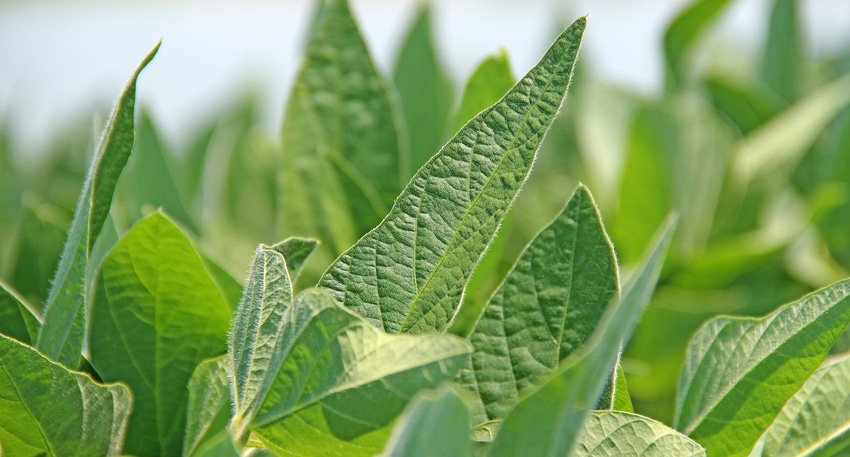
Selecting soybean varieties can be overwhelming, especially considering the volume of information that’s available. Choosing varieties that best match field conditions and planting dates was a topic at the University of Tennessee Grain Conference, held virtually on Feb. 4.
“When we look at high-yielding soybean contest winners, we see they’re not all planting a certain variety. They’re planting different varieties from different companies and different maturity groups,” said Angela McClure, Extension Corn and Soybean Specialist with the University of Tennessee Institute of Agriculture. “However, these contest winners do a good job of evaluating their fields, determining limitations and getting genetics that are a good fit to their field.”
McClure said soybean selection starts with knowing field history, especially any yield limiting factors, and using strengths of good yielding varieties to help offset yield issues. For example, consider a field with poor drainage. Without an investment in tiling, a producer can’t control drainage, but he can anticipate the problems it brings, such as potential for more seedling diseases, or issues with standability.
“Choose a variety that helps offset some of those yield limiting factors,” McClure said. “We can never correct poor drainage with variety selection, but we can manage the yield effect of poor drainage by selecting the right variety.”
Maturity groups and planting dates
McClure said growers should prioritize clean, weed-free fields, so, herbicide trait package is at the top of the list when selecting soybean varieties. Maturity group is then a close second. There are many benefits to planting multiple maturity groups in a season, including spreading risk due to weather events and staggering harvest dates if labor is limited.
McClure said growers can also improve yields by planting different maturity groups at optimal planting dates. UTIA just wrapped up a multi-year study at the AgResearch and Education Center at Milan that evaluated how different maturity groups responded to delays in planting. The goal of the research was to determine which maturity groups might be better for certain planting windows in Tennessee growing conditions.
“With Group 5’s our highest yield was always the earliest planting date,” McClure said. “In April, a Group 4 and Group 5 yield very well. A Group 3 may be another good option, although Group 3 varieties tend to produce peak yield when planted in late April to early May.”
“When we get into May, a Group 4 seems to have better yield potential than a Group 5, and a Group 3 planted on better soils might be another good fit for planting in May.”
In a double crop planting situation, the research showed Group 5 and Group 4 soybeans performed best on dryland. However, under irrigation, Group 3 soybeans outperformed Group 5s, while Group 4s remained a solid choice.
“One thing we see is that Group 4 varieties yield well regardless of planting date. It’s a pretty flexible, stable soybean,” McClure said. “Although, I’ve been really impressed on how well Group 5s do here in Tennessee, especially when planted early.”
Disease resistance
Once producers have nailed down yield genetics for their best fitting maturity group and herbicide trait package, it’s time to evaluate varieties for disease resistance.
“Some diseases are more impactful than others. Soybean cyst nematode, as well as charcoal rot, target spot, Southern stem canker, and pod and stem blight need to be managed with resistant varieties,” McClure said. “Particularly Southern stem canker. If there is any history of it in your field, you need to look at resistant varieties. We can rotate out of soybeans for a couple of years to minimize disease level in the field, but I think your best bet is to make sure you’re always planting a resistant variety in that field.”
Standability
Tall varieties with poor standability are more likely to lodge. Soybeans that start to sag at R3-R5 could see yield loss. Lodging can be managed with maturity group and cultural practices. McClure advised growers to pay attention to standability scores, and in fields where lodging has occurred, consider Medium-Tall or Medium bushy growth habit options. Lodging issues can also be managed by reducing seeding rate, avoiding excessive nitrogen, and not over watering after bloom.
Standability and soybean height can also be managed with planting date.
“Planting in April or June can shorten soybean. If you have a tall soybean that you want to manage for height, probably the worst time to plant is the first two weeks in May,” McClure said. “Year after year, the most problems I have with lodging are on soybeans planted in May. So, anytime I’m planting in May, I’m really going to look at a medium-tall variety, standability scores, and I’ll do some things to manage height on those beans.”
Planting green in heavy cover crop can also affect a variety’s standability.
“In those situations, without proper planter adjustment we can have seeds that are really close to the surface and not covered well. These plants don’t root well, and they tend to fall over towards the end of the year. Standability scores don’t predict that,” McClure said. “If you can roll the cover and plant in the direction of the roller, we’ve found we can plant deeper and see a positive impact on yield potential.”
McClure’s presentation, as well as other pre-recorded presentations from the Tennessee Grain Conference are currently available to view online through May 2021 at conference.utcrops.com.
About the Author(s)
You May Also Like






